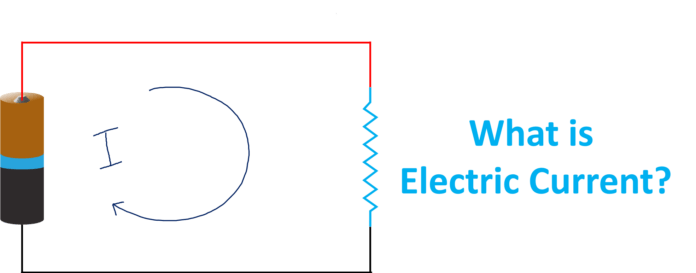Electricity is an essential part of our modern world, powering everything from our homes to our smartphones. If we look around, we would notice that electric current is there in all electronic gadgets and appliances we use in our daily life.
Take any appliance like a refrigerator, washing machine, dishwasher, and even microwave oven, as soon as we switch it ON, an electric current start flowing through. None of these appliances work without an electric current.
However, many people may not fully understand how it works, particularly when it comes to the concept of electric current.
Let us understand – What is electric current?
What is Electric Current?
At its most basic level, electric current refers to the flow of electric charge through a conductor. This electric charge can take the form of electrons, which are negatively charged particles that exist within atoms. When electrons are free to move, such as in a conductor like a wire, they can be influenced by an electric field to flow in a particular direction, creating a current.
Current can be understood with the help of the water tank analogy. Imagine a water tank over the roof of a residential house. Water flows from the tank to the tap through the pipe.
Similarly, in an electric circuit, due to the force of voltage, free electrons inside the conductor start moving. So current is nothing but the movement of electrons flowing through the conductor.
The unit of electric current is ‘Amperes’, which is typically shortened to “amps”.
Amps is the rate of flow of electric charge through a circuit, with one ampere being equivalent to one coulomb of charge per second.
It is analogous to gallons per minute or gallons per second in a water system shown below figure.
A coulomb is a unit of electric charge, and it represents a collection of around 6.24 X 1018 electrons.
Types of Electric Current
It is worth noting that electric current can be either direct current (DC) or alternating current (AC).
Direct Current (DC)
DC refers to a current that flows in one direction.

Alternating Current (AC)
AC alternates between flowing in one direction and then the other.

The type of current used in a particular application depends on a variety of factors, such as the nature of the load being powered, the distance over which the current needs to be transmitted, and the efficiency of the power source.
The direction of the current flowing has two different theories:
- Conventional Flow theory
- Electron Flow theory
Conventional Flow
This theory states that electrons flow from positive to negative.
Benjamin Franklin theorized this when very little was known about electricity.
It states that an invisible fluid known as electricity tended to flow through a wire from the positive to the negative.
Ben’s theory became the convention (hence the term “conventional current”) in electrical theory, mathematics, textbooks, and electrical equipment for the next hundred years.
The negative terminal is used as a ground or common in most electrical circuits.
When the negative terminal is utilized as ground, the positive terminal is seen as being above ground, or hot.
Electron Flow
This theory states that electrons flow from negative to positive. More research was carried out on the behavior of electrons.
Scientists discovered that electrons flow from negative to positive.
Since electrons are negatively charged, it is attracted to positively charged bodies and repelled by negatively charged bodies.
Why do we care about electric current?
Well, as mentioned earlier, it’s a fundamental component of the electricity that powers our daily lives. Without electric current, we wouldn’t be able to light our homes, charge our devices, or power the motors that run everything from cars to washing machines.
Can Electric current be dangerous?
Electric current can be dangerous if not handled properly. When a current flows through a conductor, it generates heat due to the resistance of the material. If the current is too high, this heat can cause the conductor to melt or even catch fire. Additionally, if a person comes into contact with a live wire, they can be electrocuted due to electric current passing through the body.
How do we control electric current to ensure it’s both useful and safe?
One way is through use of circuit breaker and fuses. These devices are designed to interrupt the flow of current if it exceeds a certain threshold, such as when a wire is overloaded or a short circuit occurs.
Another way to control electric current is through the use of resistors. A resistor is a component that resists the flow of electric current, effectively slowing it down. By placing resistor in a circuit, we can regulate the amount of current flowing through different parts of the circuit, which can help prevent damage to components and ensure the circuit functions properly.
Voltage and Electric Current Relationship
Finally, it’s worth mentioning that electric current is closely related to another key concept: voltage.
Voltage refers to the potential difference between two points in a circuit, and it’s what drives electric current to flow. In order for a current to flow, there needs to be a difference in voltage between two points, which creates an electric field that pushes the electrons through the conductor.
Summarizing
In summary, electric current is the flow of electric charge through a conductor, typically measured in amperes. It’s an essential part of the modern world, power everything from our home appliances to our electronic gadgets like smartphones, and smart watches, etc. However, it can be dangerous if not properly, which is why we use devices like circuit breakers and resistor to regulate its flow. By understand electric current and how it works, we can better appreciate the technology that surround us and use it safely and effectively.











